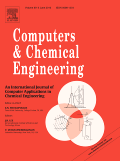 Authors: Piernico SEPIACCI, Valentina DEPETRI, Davide MANCA
Authors: Piernico SEPIACCI, Valentina DEPETRI, Davide MANCA
Affiliation: PSE-Lab, Process Systems Engineering Laboratory, Dipartimento di Chimica, Materiali e Ingegneria Chimica “Giulio Natta”, Politecnico di Milano, PiazzaLeonardo da Vinci 32, 20133 Milano, Italy
Reference: Sepiacci, P., Depetri, V., & Manca, D. (2017). A systematic approach to the optimal design of chemical plants with waste reduction and market uncertainty. Computers and Chemical Engineering, 102, 96–109.
Abstract: “The paper presents a methodology for the quantitative assessment of sustainability applied to the design of chemical plants. Specifically, we focus on the economic and environmental sustainability. The methodology implemented for the economic assessment is the predictive conceptual design (PCD) that uses as indicator the cumulated dynamic economic potential over a long-term horizon. PCD accounts for both CAPEX and OPEX terms, which on their turn depend on dynamic econometric models of commodities and utilities. The environmental assessment is based on the waste reduction algorithm and on the evaluation of the potential environmental impact…”
DOI: 10.1016/j.compchemeng.2016.11.032
Comments: the authors chose to apply the WAR algorithm to evaluate the environmental impact of both the cumene production and the energy consumed within the process. The cumene plant is simulated at steady-state conditions with UniSim Design R430, using the Peng-Robinson equation of state for the thermodynamic properties. The normalized impact scores are obtained from the WAR algorithm add-in included in the COFE Simulation Environment released by AmsterCHEM in collaboration with the US Environmental Protection Agency. While this is not stated in the paper, the authors must have copied and pasted information from Unisim Design into COFE in order to apply the WAR algorithm. It would have been easier to model the entire cumene process in COFE and apply then WAR in there. The model of the cumene process is easily set up in COFE, especially since the thermodynamic model used in UniSim Design is a very common one. The paper could have made the point that having the CAPE-OPEN Flowsheet Monitoring interface implemented in UniSim Design would be useful in order to access directly there the WAR algorithm from US EPA. Corresponding author (Davide MANCA) was contacted about this but did not answer.
CAPE-OPEN related papers cited:
- Barrett, W.M., van Baten, J., Martin, T., 2011. Implementation of the waste reduction (WAR) algorithm utilizing flowsheet monitoring. Comput. Chem. Eng. 35, 2680–2686.
